Showing Spotlights 649 - 656 of 2783 in category All (newest first):
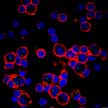 Programmable nucleic acid nanoparticle (NANP) technology is a relatively new field that has already given rise to a host of self-assembling nucleic acid nanoparticles that are increasingly viewed as promising biological materials for medical applications. Programmable self-assembling NANPs are amenable to chemical modifications, control over functionalization, and consistent batch-to-batch formulation. Researchers present the first detailed and systematic study that involved 25 most representative NANPs, originally designed by different groups, screened for the induction of 29 different cytokines.
Programmable nucleic acid nanoparticle (NANP) technology is a relatively new field that has already given rise to a host of self-assembling nucleic acid nanoparticles that are increasingly viewed as promising biological materials for medical applications. Programmable self-assembling NANPs are amenable to chemical modifications, control over functionalization, and consistent batch-to-batch formulation. Researchers present the first detailed and systematic study that involved 25 most representative NANPs, originally designed by different groups, screened for the induction of 29 different cytokines.
Jun 25th, 2018
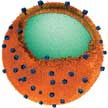 Cell membrane coating is a platform technology that presents a facile top-down method for designing nanocarriers with surfaces that directly replicate the highly complex functionalities necessary for effective biointerfacing. This new class of biomimetic nanoparticles combines the advantages of both natural and artificial nanomaterials. Cell membrane-coated nanoparticles are characterized by a synthetic nanoparticulate core cloaked by a layer of natural cell membrane.
Cell membrane coating is a platform technology that presents a facile top-down method for designing nanocarriers with surfaces that directly replicate the highly complex functionalities necessary for effective biointerfacing. This new class of biomimetic nanoparticles combines the advantages of both natural and artificial nanomaterials. Cell membrane-coated nanoparticles are characterized by a synthetic nanoparticulate core cloaked by a layer of natural cell membrane.
Jun 21st, 2018
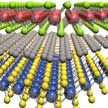 A new paper reviews the studies to date that have addressed the toxicity of 2D materials, particularly emphasizing the preparation methods and resulting physicochemical properties that dictate their interactions with biological systems. In addition, due to its importance in determining exposure risk, this review summarizes key results from the literature concerning the environmental fate of 2D materials. The authors hope that a thorough understanding of these issues will inform ongoing efforts to realize the design of safer 2D materials.
A new paper reviews the studies to date that have addressed the toxicity of 2D materials, particularly emphasizing the preparation methods and resulting physicochemical properties that dictate their interactions with biological systems. In addition, due to its importance in determining exposure risk, this review summarizes key results from the literature concerning the environmental fate of 2D materials. The authors hope that a thorough understanding of these issues will inform ongoing efforts to realize the design of safer 2D materials.
Jun 19th, 2018
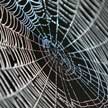 Spider silk fibers show nature's most outstanding mechanical properties, for example, excellent tensile strength and elasticity, and remarkable protein sequence structure. So far, it has remained completely unidentified how the mechanical properties of spider silk fibers effectively contribute to the performance of a piezoelectric nanogenerator. Now, researchers have successfully demonstrated by Piezoresponse Force Microscopy experiment that natural spider silk fibers have a definite vertical (out-of-plane) piezoelectric coefficient.
Spider silk fibers show nature's most outstanding mechanical properties, for example, excellent tensile strength and elasticity, and remarkable protein sequence structure. So far, it has remained completely unidentified how the mechanical properties of spider silk fibers effectively contribute to the performance of a piezoelectric nanogenerator. Now, researchers have successfully demonstrated by Piezoresponse Force Microscopy experiment that natural spider silk fibers have a definite vertical (out-of-plane) piezoelectric coefficient.
Jun 14th, 2018
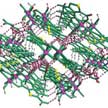 Researchers have demonstrated materials and techniques to achieve highly sensitive flexible biosensors integrated with metal-organic frameworks (MOFs) - essentially inorganic-organic hybrids that contain repeated metal ions connected with organic ligands. These high-throughput flexible devices can achieve highly specific and sensitive electrochemical detection and can be used to monitor neurotransmitters and nutrients in vivo.
Researchers have demonstrated materials and techniques to achieve highly sensitive flexible biosensors integrated with metal-organic frameworks (MOFs) - essentially inorganic-organic hybrids that contain repeated metal ions connected with organic ligands. These high-throughput flexible devices can achieve highly specific and sensitive electrochemical detection and can be used to monitor neurotransmitters and nutrients in vivo.
Jun 13th, 2018
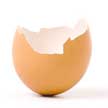 In new work, researchers explore inexpensive, biodegradable and daily-waste eggshell membrane as a novel bio-piezoelectric material for harvesting green energy. The uniqueness of our work lies in the novelty of directly utilizing natural eggshell membranes as efficient piezoelectric material. This simple, innovative approach could provide huge benefits for research in future energy science, especially with regard to in vivo biomedical applications.
In new work, researchers explore inexpensive, biodegradable and daily-waste eggshell membrane as a novel bio-piezoelectric material for harvesting green energy. The uniqueness of our work lies in the novelty of directly utilizing natural eggshell membranes as efficient piezoelectric material. This simple, innovative approach could provide huge benefits for research in future energy science, especially with regard to in vivo biomedical applications.
Jun 12th, 2018
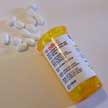 Drug abuse and dependence/addiction are complex disorders that are regulated by a wide range of interacting networks of genes and pathways that control a variety of phenotypes. Therefore, both identification of the at-risk population and treatment of the addiction disorders are strongly reliant on the development of new and innovative approaches for understanding the mechanisms underlying drug dependency and addiction. There are potential capacities of nanotechnology for the field of drug dependency and addiction.
Drug abuse and dependence/addiction are complex disorders that are regulated by a wide range of interacting networks of genes and pathways that control a variety of phenotypes. Therefore, both identification of the at-risk population and treatment of the addiction disorders are strongly reliant on the development of new and innovative approaches for understanding the mechanisms underlying drug dependency and addiction. There are potential capacities of nanotechnology for the field of drug dependency and addiction.
Jun 1st, 2018
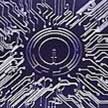 Researchers have developed a new process for completely transparent and flexible circuits of any patterns as one wishes. The circuit patterns are created via the well-developed microfluidic technology on transparent and flexible substrates. The conductors are generated by spin coating of silver nanowires along the patterns. The advance stimulates more implications in future electronics. The researchers have demonstrated a simple application of the circuits as a biosensor for glucose detection.
Researchers have developed a new process for completely transparent and flexible circuits of any patterns as one wishes. The circuit patterns are created via the well-developed microfluidic technology on transparent and flexible substrates. The conductors are generated by spin coating of silver nanowires along the patterns. The advance stimulates more implications in future electronics. The researchers have demonstrated a simple application of the circuits as a biosensor for glucose detection.
May 31st, 2018
 Programmable nucleic acid nanoparticle (NANP) technology is a relatively new field that has already given rise to a host of self-assembling nucleic acid nanoparticles that are increasingly viewed as promising biological materials for medical applications. Programmable self-assembling NANPs are amenable to chemical modifications, control over functionalization, and consistent batch-to-batch formulation. Researchers present the first detailed and systematic study that involved 25 most representative NANPs, originally designed by different groups, screened for the induction of 29 different cytokines.
Programmable nucleic acid nanoparticle (NANP) technology is a relatively new field that has already given rise to a host of self-assembling nucleic acid nanoparticles that are increasingly viewed as promising biological materials for medical applications. Programmable self-assembling NANPs are amenable to chemical modifications, control over functionalization, and consistent batch-to-batch formulation. Researchers present the first detailed and systematic study that involved 25 most representative NANPs, originally designed by different groups, screened for the induction of 29 different cytokines.
 Subscribe to our Nanotechnology Spotlight feed
Subscribe to our Nanotechnology Spotlight feed





